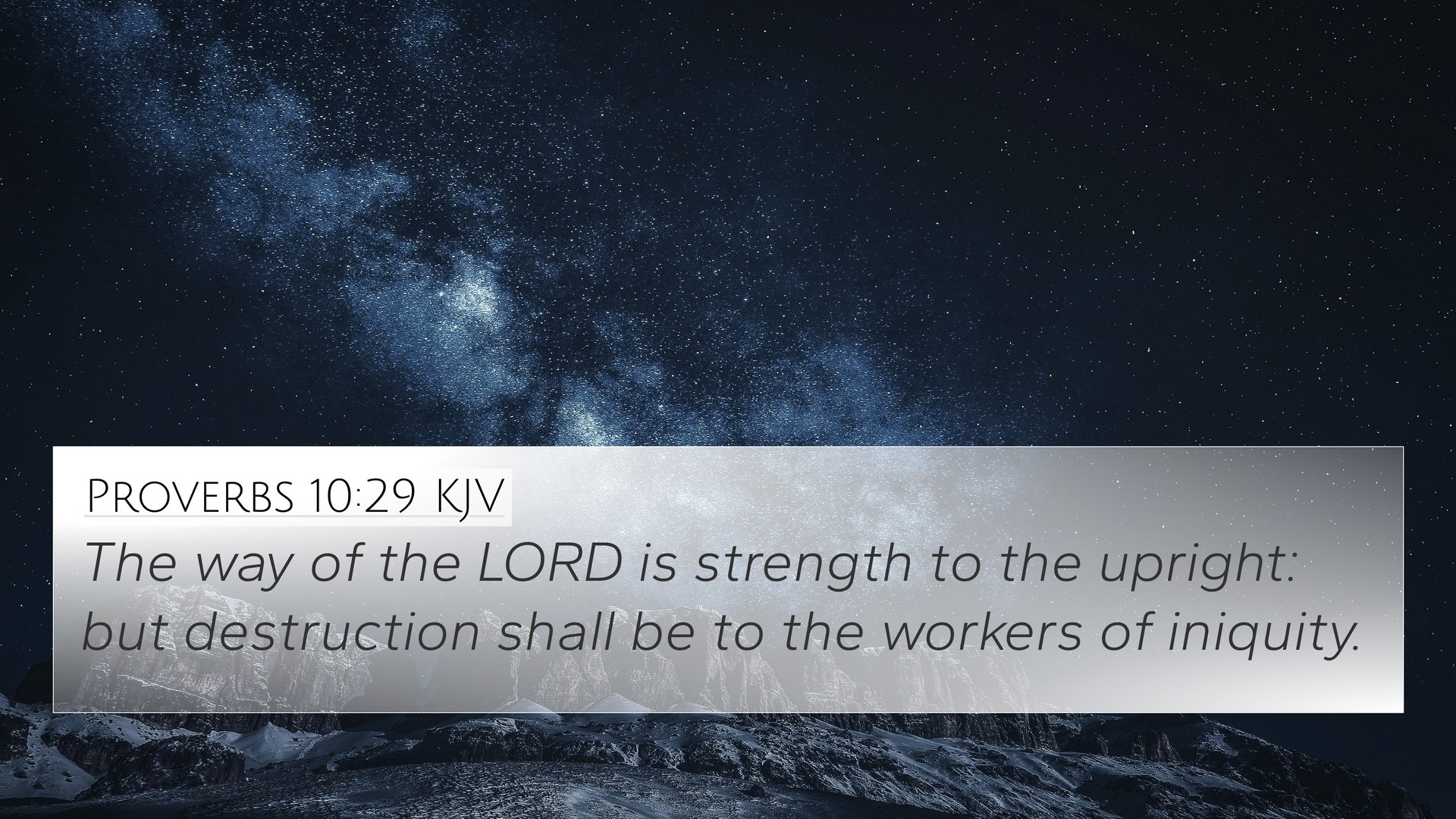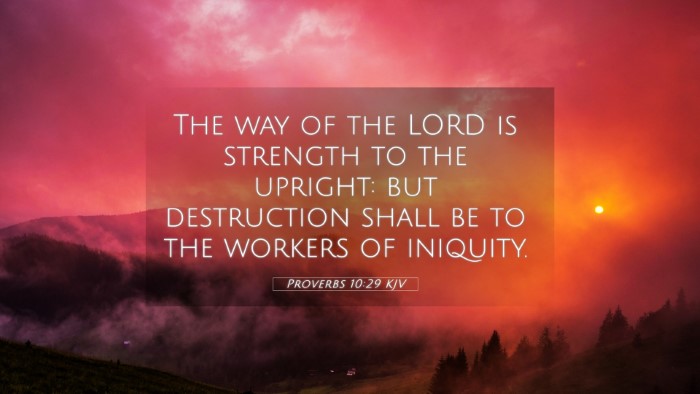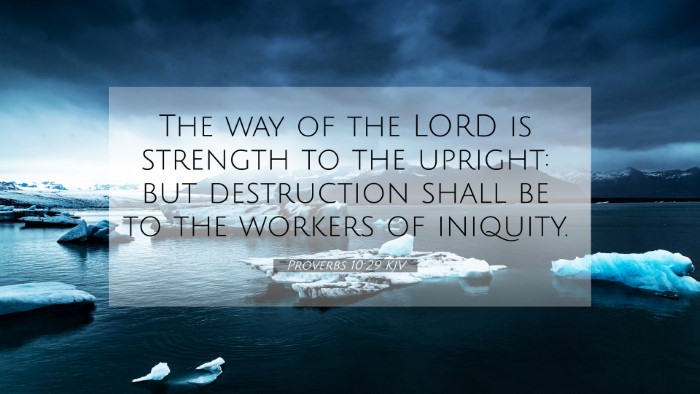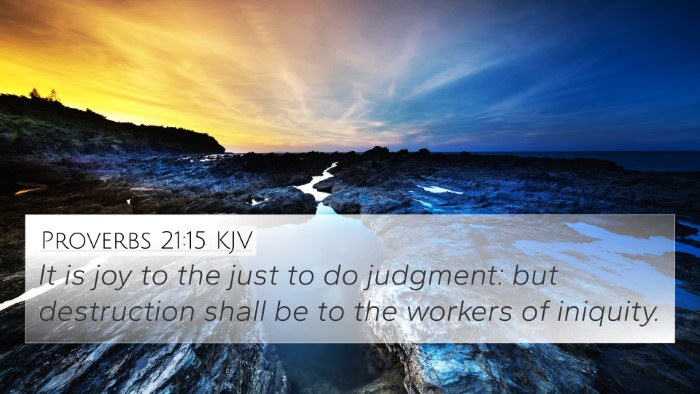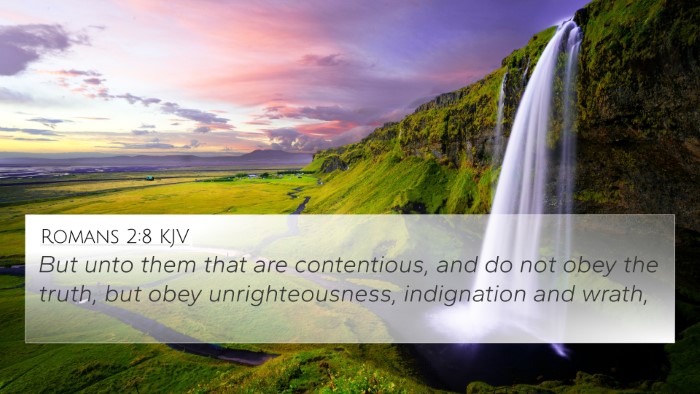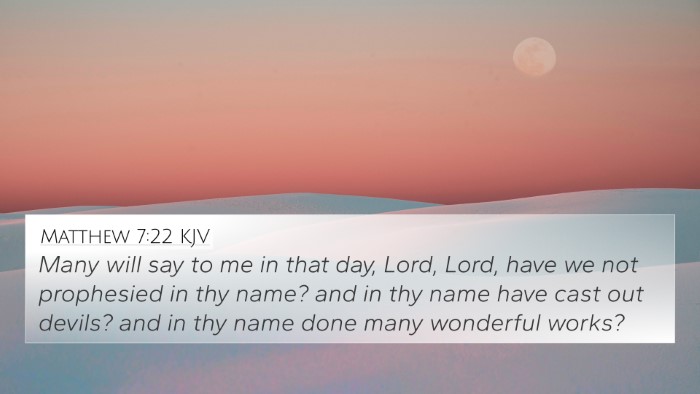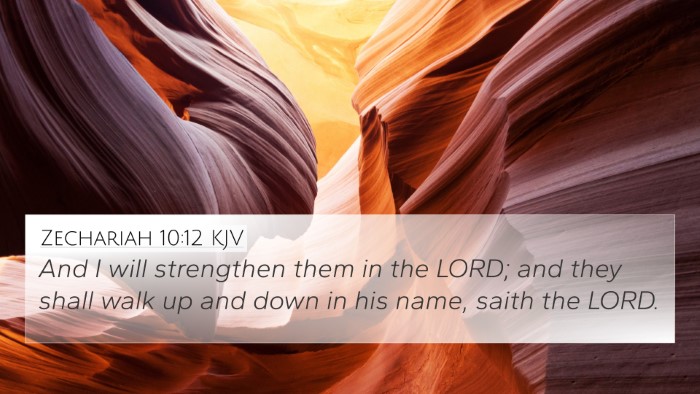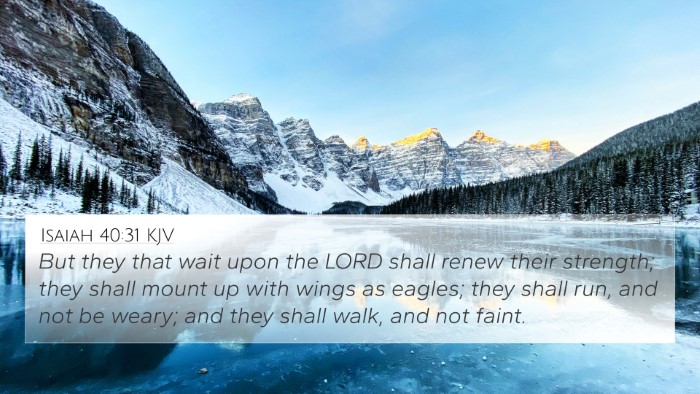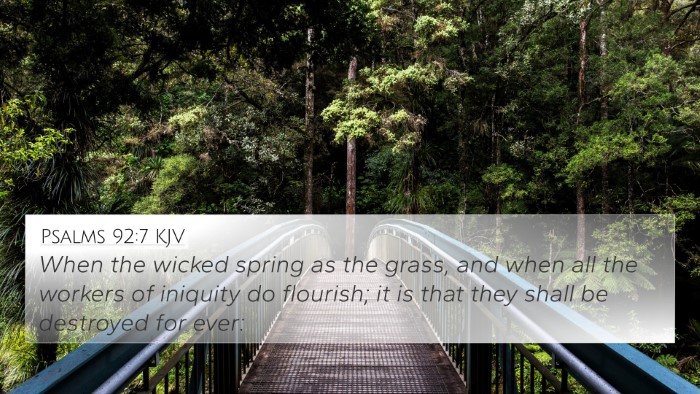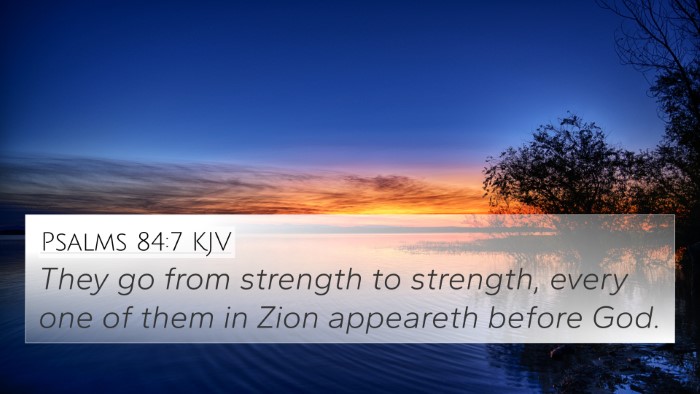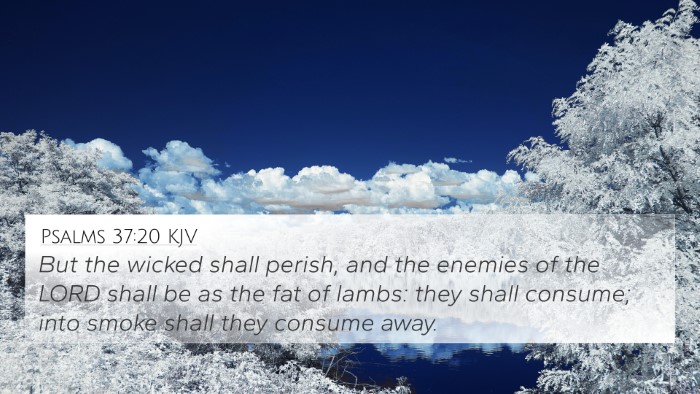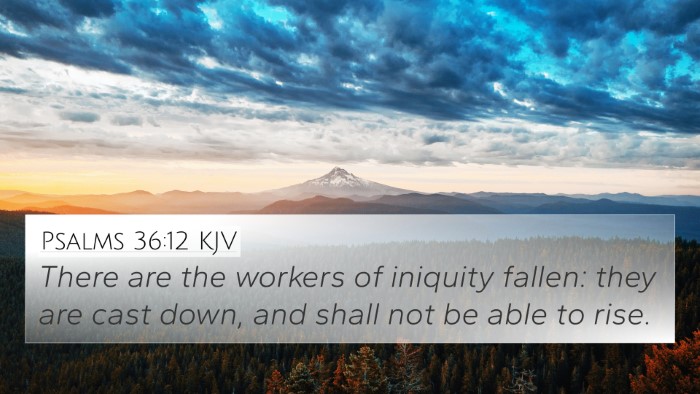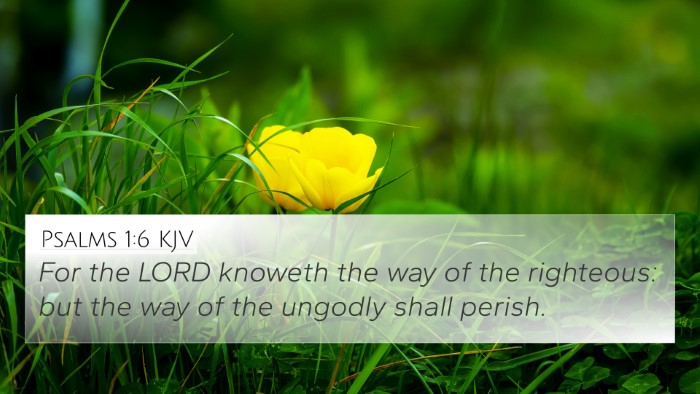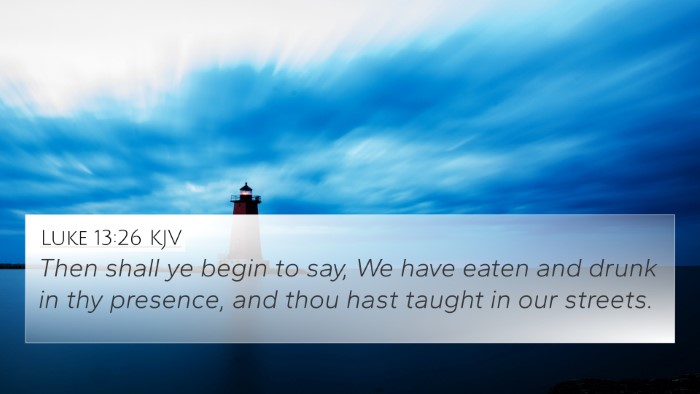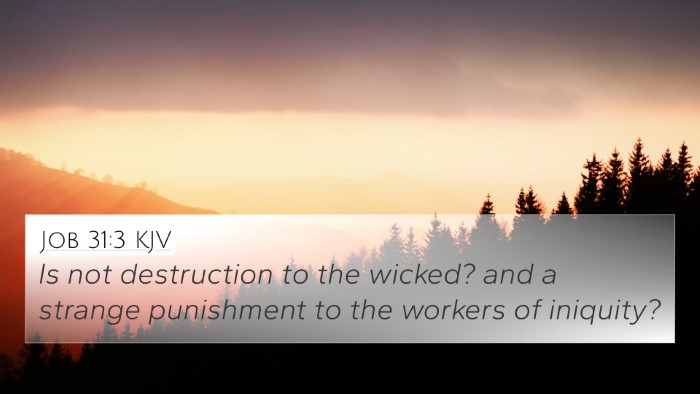Understanding Proverbs 10:29
Proverbs 10:29 states: "The way of the LORD is a refuge to the upright: but destruction shall be to the workers of iniquity." This verse presents a contrast between the fates of the righteous and the wicked, illustrating the overarching theme of divine justice and protection found throughout Scripture.
In understanding the meaning of this verse, we can draw insights from several public domain commentaries, reflecting on the key concepts of refuge, righteousness, and divine consequence.
Commentary Insights
-
Matthew Henry:
Henry emphasizes that the “way of the LORD” serves as a sanctuary for those living in accordance with God’s commandments. The upright, representing the righteous, find safety and security in God’s promises, while the wicked face certain destruction due to their rebellion against divine law.
-
Albert Barnes:
Barnes expands on the notion of “destruction,” indicating that it signifies not just physical ruin but a moral and spiritual downfall. For workers of iniquity—those who consciously choose evil—consequences are inevitable and severe, highlighting the importance of choosing righteousness.
-
Adam Clarke:
Clarke notes that the “upright” are depicted as those who genuinely seek a life reflective of God’s attributes. The promise of refuge assures believers that they are under God’s watchful care, reinforcing the peace that accompanies a righteous life.
Bible Cross-References for Proverbs 10:29
- Psalm 37:39-40 - The LORD helps the righteous and safeguards them.
- Proverbs 18:10 - The name of the LORD is a fortified tower; the righteous run to it and are safe.
- Isaiah 54:14 - In righteousness you will be established; tyranny will be far from you.
- Romans 6:23 - The wages of sin is death, but the gift of God is eternal life through Jesus Christ our Lord.
- 1 Peter 3:12 - The eyes of the Lord are on the righteous, and his ears are attentive to their cry.
- Matthew 7:13-14 - The narrow gate leads to life, while the wide gate leads to destruction.
- Galatians 6:7 - A man reaps what he sows; those who sow to please their flesh will reap destruction.
Connections Between Bible Verses
Proverbs 10:29 initiates discussions about the protective nature of God towards those who live righteously. This idea is echoed throughout the Scriptures, revealing thematic connections that encourage believers to uphold a life centered on God.
For example, linking this verse to Psalm 37 reveals that the LORD is a stronghold for those who pursue righteousness. In contrast, Romans 6:23 elucidates that the ultimate end of sinfulness is death, reinforcing the perils faced by those who reject God's way.
Thematic Bible Verse Connections
-
God’s Protection:
Psalm 91:1-2 - Offers reassurances of how dwelling in God's presence brings safety.
-
Consequences of Sin:
Proverbs 13:15 - Good understanding gives favor, but the way of the transgressor is hard.
-
Call to Righteousness:
Micah 6:8 - Highlights the expectation for humanity to act justly, love mercy, and walk humbly with God.
Importance of Cross-Referencing Biblical Texts
For effective biblical study, employing tools for cross-referencing enhances our understanding. By exploring connections between verses, one can grasp the full scope of biblical teachings on themes such as righteousness, judgment, and divine promise.
The comparative Bible verse analysis demonstrated in Proverbs 10:29 facilitates a deeper realization of God’s nature and His relationship with humanity. Using a Bible concordance or cross-reference guide allows scholars and laypeople alike to identify pertinent verses that resonate with specific themes.
How to Use Bible Cross-References
To effectively engage in cross-referencing, consider the following methods:
-
Identifying Key Themes:
Begin by noting key terms such as "righteousness," "refuge," and "destruction" to find related verses.
-
Using a Bible Concordance:
A concordance helps trace themes and concepts that may link various scriptures together for thematic analysis.
-
Comparative Studies:
This involves detailed examination of theological principles across both the Old and New Testaments, enriching interpretation and comprehension.
Conclusion
Proverbs 10:29 serves as a reminder of the vital distinction between the blessing of the righteous and the fate of the wicked. Through cross-referencing related verses, believers can explore this theme further within the rich tapestry of Biblical teaching. Engaging in these reflections not only deepens one’s understanding of God’s character but strengthens faith and guides living in alignment with His will.
